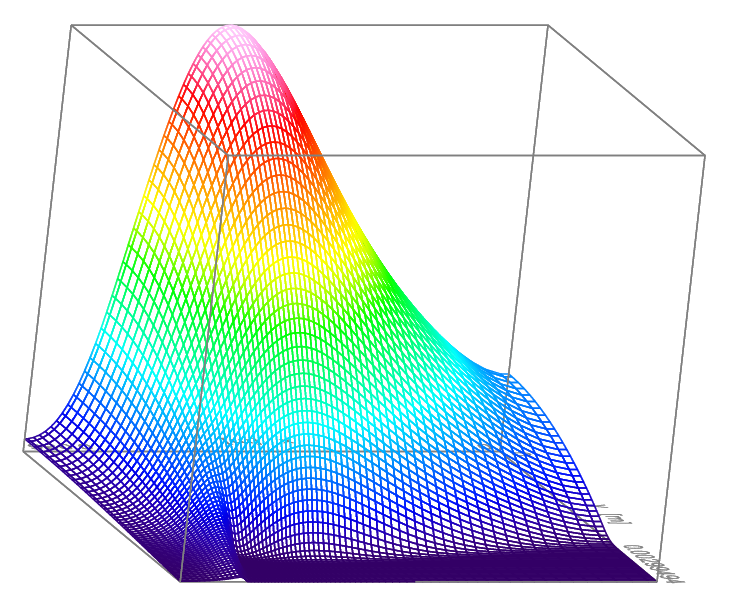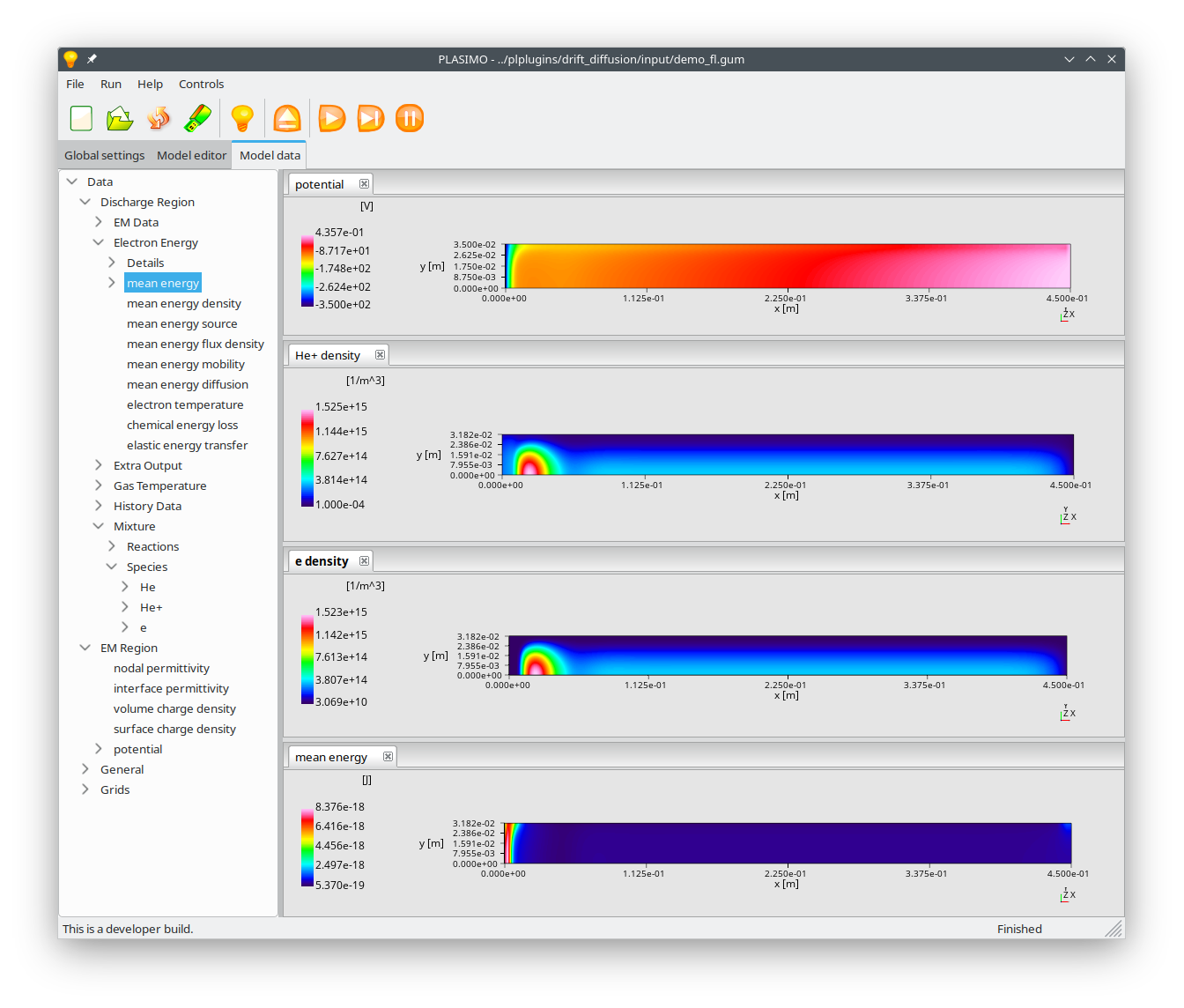 PLASIMO's drift-diffusion model is a time-dependent multi-fluid model
that is based on balance equations derived from the Boltzmann equation.
One of the main assumptions of drift-diffusion models is that the background
gas is dominant. For the minority species (electrons, ions,
atoms and molecules) we solve the species and momentum balance equations.
These are coupled with the electron energy balance equation and with the
Poisson equation for the electric field.
PLASIMO's drift-diffusion model is a time-dependent multi-fluid model
that is based on balance equations derived from the Boltzmann equation.
One of the main assumptions of drift-diffusion models is that the background
gas is dominant. For the minority species (electrons, ions,
atoms and molecules) we solve the species and momentum balance equations.
These are coupled with the electron energy balance equation and with the
Poisson equation for the electric field.
Features
- 1, 2 and 3D simulations
- Structured and unstructured grids
- Choice of solver and solver settings for each equation
- Choice of discretizers for each equation
- Initialization from previous run
- Parameterized series of runs

Model options
- More complete ion momentum balance including inertial effects
- Local Field Approximation or Local Energy Approximation for the electrons
- Gas temperature calculations
- Gas flow calculations
- Built-in Boltzmann solvers: BOLSIG+ and LoKI-B
- Radiation transport calculations ( Radiation transport, P1 method )
- Hybrid simulations: kinetic Monte-Carlo module for electrons
- Wall processes: secondary emission, photoemission, sputtering, thermionic emission or custom
- Surface chemistry module
- ICP field calculations in time domain
- Microwave field calculations in the frequency domain
- NEW: Dusty plasma modeling
- NEW: Tracking individual particles in plasma
Input data
- User-defined configuration and operating parameters
- User-defined set of species and reactions
- User-defined rate coefficients: constant, lookup table, from cross-sections, Arrhenius or custom expression
- Direct use of electron-impact cross-sections from the LXCat database
- Automatic construction of vibrational excitation, V-V and V-T reaction groups using scaling laws
- Convenient construction of series of related reactions from a template
Read about the PLASIMO's Drift-Diffusion Module applications here: Applications